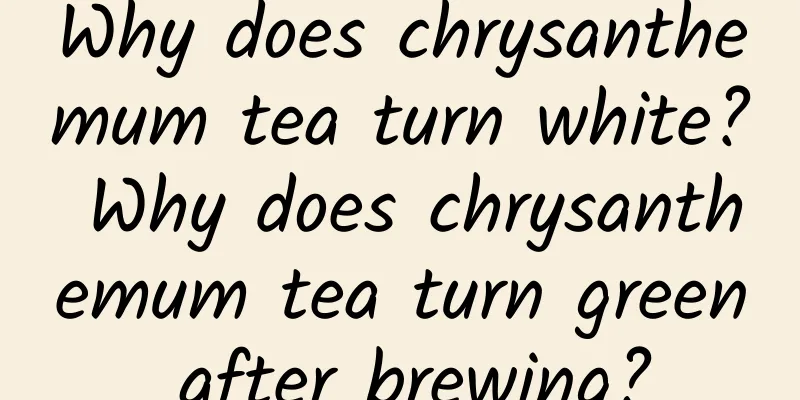Do you know? Open the door┋Eating watermelon is equivalent to drinking "sugar water"?

|
Contributing expert: Li Caihong, chief nutrition technician at the Urumqi First People's Hospital, member of the Chinese Nutrition Society, member and secretary of the Youth Committee of the Xinjiang Nutrition Society Review expert: Yang Lin, chief physician, supervisor of Xinjiang Nutrition Society, and chief scientific communication expert of the autonomous region When Shennong tasted hundreds of herbs, watermelon was called Xigua (derived from the legend of Shennong tasting hundreds of herbs). It got its name because of its high water content and thin flesh. But later on, it was passed down and became the watermelon that everyone is familiar with today. The reason why watermelon is sweet and juicy is that it contains a lot of glucose and fructose, especially fructose (a kind of monosaccharide), and the water content is basically above 90%. So people have the illusion that eating watermelon is equivalent to drinking "sugar water". actually, The sweeter the fruit tastes, the less likely it is to have a higher sugar content. Because sweetness and sourness are the most important taste sensations of fruits, which are produced by sugar and organic acid respectively. Sugar here refers to soluble sugar (such as glucose, fructose, sucrose, etc.), and acid refers to titratable acid (such as malic acid, citric acid, tartaric acid, etc.). However, the sweet and sour flavor of fruits is not a simple superposition of sweetness and sourness, but depends on the types, contents, and proportions of various sugars and acids in fruits, as well as people's sweetness taste threshold, etc. Different sugars have different sweetness values. Although they are all sugars, the sweetness of glucose, fructose and sucrose is quite different. In terms of sweetness value, fructose>sucrose>glucose. When the proportion of sugar components contained in a fruit is different (that is, the percentage of glucose, fructose and sucrose is different), the sweetness value of the fruit will be different. Therefore, watermelons with a high fructose ratio will taste sweet. The sweetness value will be different depending on the sugar-acid ratio. When the ratio of organic acid to sugar is different, the sweetness sensation given to people will also be different. When the flavor is light or sour, the sugar-acid ratio is less than 20; when the flavor is moderately sweet and sour, the sugar-acid ratio is between 20-60; when the sweetness is enhanced, the sugar-acid ratio is greater than 60. Although 100 grams of watermelon contains 5.8 grams of carbohydrates (also known as sugars), the sugar content is only half of that of dragon fruit and passion fruit, but the organic acid content is very low, so we can still feel the sweetness of watermelon. Different people have different sweetness taste thresholds. Different people have different "abilities" to sense sweetness. Even if it is the same piece of fruit, different people will feel different sweetness when eating it! This is because: each of us has a different sweetness taste threshold! The above is why watermelon tastes sweet even though it does not contain a lot of sugar. Therefore, it is inaccurate to judge the sugar content of fruit only by taste. Can diabetics eat watermelon? In the hot summer, when you see a big, juicy red watermelon, you can't help but want to take a bite. However, at this time, some diabetic patients still secretly advise themselves in their hearts: "Eating watermelon is equivalent to drinking sugar water, so hold back!" From the perspective of carbohydrate digestion and absorption, the majority of sugar in watermelon is fructose, but the absorption of fructose in the small intestine is passive diffusion absorption, and its absorption rate is relatively low, less than half of that of glucose and lactose. From the perspective of glycemic index (GI), watermelon GI=72, which is a high GI food. GI is a parameter that reflects the physiological effect of food. It is used to measure the change in blood sugar within 2 hours after the human body eats a certain amount of carbohydrate-rich food. Carbohydrate-rich foods can be divided into low GI foods: GI≤55, medium GI foods: 55<GI≤70, and high GI foods: GI>70. High GI foods are quickly digested and absorbed after entering the gastrointestinal tract, and glucose is released quickly. The peak value of glucose after entering the blood is high, which means that blood sugar rises high. From the perspective of glycemic load (GL), watermelon is a low glycemic load food. GL was proposed by a professor at Harvard University in 1997. It combines the quality and quantity of carbohydrate intake to evaluate the total glycemic effect of a diet, making up for the problem that GI cannot reflect the total amount of carbohydrates contained in a certain amount of food. When GL>20, it has a greater impact on blood sugar; when GL is between 10-20, the impact on blood sugar is moderate; when GL<10, the impact on blood sugar is relatively small. GL = GI of food × available carbohydrate content of the food consumed. Let's calculate the GL value of watermelon: GI = 72, so the GL of watermelon = 72% × 5.8 = 4.176, which is a low GL food. After calculation, the GL value of apples is 4.43, which is similar to that of watermelons. Therefore, although apples and watermelons have quite different tastes and sweetness, from the perspective of glycemic load, the degree of their impact on blood sugar is relatively similar. From the perspective of GI, watermelon is high, but from the perspective of GL , it is low. So can we still eat it? Although China's "Dietary Guidelines for Adults with Diabetes (2023 Edition)" encourages diabetic patients to choose more low-GI foods, it also mentions that high-GI foods are not completely restricted. Eating them in moderation and through reasonable combinations can also help maintain blood sugar stability. Therefore, high-GI foods are not completely off-limits. We should treat each food objectively based on calories, carbohydrates, GI, and GL. The reason why we analyze the effect of watermelon on blood sugar from so many angles is that watermelon pulp not only provides energy, but also contains a certain amount of nutrients, such as protein, carbohydrates, dietary fiber, carotene, vitamin C, potassium, sodium, magnesium, calcium, etc., and is rich in lycopene and other phytochemicals that are beneficial to health. The "Daily Materia Medica" also records that watermelon is rich in various vitamins and has the effect of balancing blood pressure and regulating heart function. So, when it comes to watermelon, diabetics can also eat it. The key is to know when to eat it and how much to eat. Different groups of people consume different amounts of melon. The recommended daily intake varies for different groups of people. The recommended amount mentioned here is the total amount of fruit for one day. If the watermelon you have eaten today has reached the upper limit of the recommended amount, then it is not recommended to eat other fruits today. For healthy people, it is recommended that school children aged 6-10 should consume within 150-200 grams; school children aged 11-13 should consume within 200-300 grams; school children aged 14-17 should consume within 300-350 grams; adults should control it within 200-350 grams; although there is no recommended amount for the elderly, overall they should consume less than adults, especially the elderly aged 80 and above should consume even less. For people with chronic diseases, such as diabetics, when blood sugar is kept stable and within the normal range through medication or diet, it is recommended to control it within 100-150 grams. The time to eat must be between two meals and when you are not hungry. If you feel hungry, you must not eat, and it is best to eat in small amounts in several times. If you accidentally can't help but eat too much, then the corresponding amount of exercise should be slightly more than usual, but try not to eat too much to avoid short-term harm caused by blood sugar fluctuations, otherwise it is easy to cause acute blood sugar increase, induce diabetic ketoacidosis and hyperosmolar hyperglycemic syndrome, and lead to a variety of diseases. The recommended amount for patients with hyperlipidemia and obesity is similar to that for patients with diabetes. It is not recommended for special groups of people to eat watermelon, such as people whose blood sugar control is not up to standard or whose blood sugar fluctuates (high blood sugar can lead to acute complications of diabetes), patients with renal insufficiency (excessive water content in watermelon can increase the burden on the kidneys), and women with dysmenorrhea (dysmenorrhea can be aggravated during menstruation). References: [1] Li Wensheng, Yang Yuan, Shi Lei, et al. Study on the correlation between sucrose, reducing sugar, soluble sugar and sweetness in fruits [J]. Northern Horticulture, 2012(01):58-60. [2] Zheng Lijing, Nie Jiyun, Yan Zhen. Research progress on sugar and acid components and their effects on fruit flavor [J]. Journal of Fruit Science, 2015, 32(02): 304-312. [3] Wu Ping. Whether the sugar content of fruit is high or not is not determined by taste [J]. Jiangsu Health Care, 2018(06):50. [4] Yang Li, Zhao Fangfang, Huang Feifei, et al. Meta-analysis of the effects of low glycemic index/low glycemic load diet on blood glucose indicators in diabetic patients[J]. Chinese Journal of Clinical Nursing, 2019, 11(02): 97-101+106. [5] Zhang Caishan, ed. A Complete Book on Dietary Dos and Don'ts and Food Pairings[M]. 2019. [6] Dietary Guidelines for Adults with Diabetes (2023 Edition)[J]. General Practice Clinical and Education, 2023, 21(05): 388-391. [7] "Dietary Guidelines for the Elderly in China (2022)"[J]. Food Industry, 2023(02):28-30. [8] “Dietary Guidelines for Chinese Residents (2022)” released in Beijing[J]. Journal of Nutrition, 2022, 44(06): 521-522. [9] Zhang Na, Zhu Wenli, Zhang Man, et al. Interpretation of the Dietary Guidelines for School-age Children in China (2022)[J]. Chinese Journal of School Health, 2022, 43(06): 805-808. |
<<: Can cold weather cause arthritis?
>>: If a child takes antipyretic medicine and then vomits, does he need to take it back?
Recommend
Symptoms after egg and sperm fusion
Everyone knows that when the sperm and egg combin...
Stomach discomfort during early pregnancy
If the nutritional status of a pregnant woman is ...
Is it normal to feel a little dizzy in early pregnancy?
Pregnancy is very difficult. Pregnant mothers not...
Where is the hymen located?
The hymen is a thin membrane covering the female ...
What foods are good for preventing the new coronavirus? Dietary tips for preventing the new coronavirus pneumonia
We all know that the new coronavirus pneumonia is...
Has Ding Ning of Sword Dynasty reached the ninth realm? Why does Ding Ning of Sword Dynasty call Changsun Qianxue "Auntie"?
At the beginning of the Sword Dynasty, many peopl...
What to do if progesterone is too low
Some women, due to low progesterone levels, are p...
An excellent whole grain that is seriously neglected. It is delicious, not fattening, and can control blood sugar! It can replace rice and steamed buns
When you mention highland barley, the first thing...
White belt transparent brushed
Everyone's body is a sophisticated instrument...
Can I still have sex after having cervical erosion?
Cervical erosion is a very common gynecological d...
How harmful is it to drink sugary drinks for a long time? Experts give the answer. Do you dare to drink it again after reading this?
Do you usually drink milk tea or other beverages?...
Two menstrual periods per month
Some people have their periods twice a month. For...
Are OK glasses, the “magic weapon” for myopia prevention and control, OK glasses OK or not?
Author: Jin Xin, Director of the Shouyang Myopia,...




![[Medical Q&A] Why is it harder to fall asleep the more you worry about insomnia?](/upload/images/67f118d182b44.webp)




